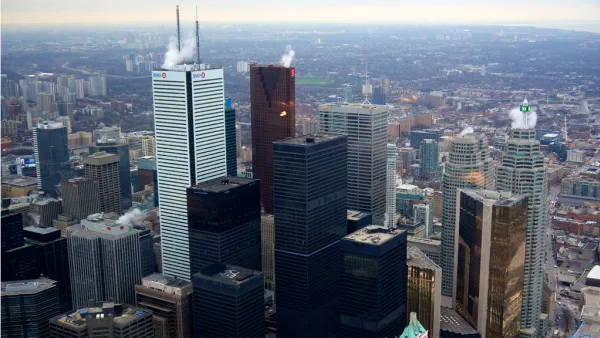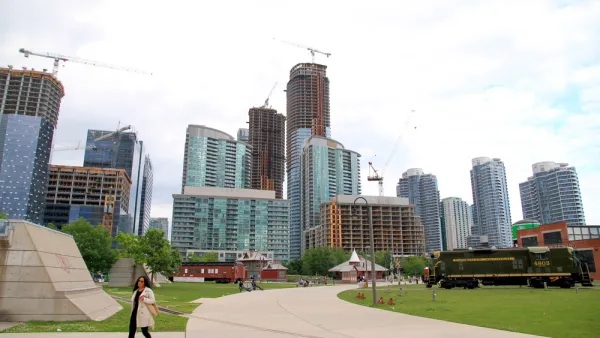Christopher Hume delivers a forceful argument for why density is necessary for maintaining a prosperous Toronto in the decades ahead, and why the alternative, sprawl, is environmentally unsustainable and economically ruinous.
Hume identifies a national justification for sprawl "on the basis that there will always be more
empty fields to develop" and a deep bias
against density from the many who feel development "should be stopped after
they have what they want."
Despite scary connotations with "shadowy canyons of bleak
high-rise apartment buildings and over-crowded buses lurching along
congested streets...density also means the museum, art galleries, film festivals,
Nuit Blanche and major league sports," says Hume. "Density generates economic activity, i.e. jobs and wealth. And in the
21st century, as never before, the business of the world is transacted
in large urban centres."
While some criticize Toronto's condo boom, the alternative, sprawl, "has long since reached the point where advantages are outweighed by disadvantages." And it is sprawl, after all, not density, that causes congestion.
"What the car hath taken away," concludes Hume, "density will giveth back."
FULL STORY: Urban density is key to smart growth

National Parks Layoffs Will Cause Communities to Lose Billions
Thousands of essential park workers were laid off this week, just before the busy spring break season.

Retro-silient?: America’s First “Eco-burb,” The Woodlands Turns 50
A master-planned community north of Houston offers lessons on green infrastructure and resilient design, but falls short of its founder’s lofty affordability and walkability goals.

Delivering for America Plan Will Downgrade Mail Service in at Least 49.5 Percent of Zip Codes
Republican and Democrat lawmakers criticize the plan for its disproportionate negative impact on rural communities.

Test News Post 1
This is a summary

Test News Headline 46
Test for the image on the front page.

Balancing Bombs and Butterflies: How the National Guard Protects a Rare Species
The National Guard at Fort Indiantown Gap uses GIS technology and land management strategies to balance military training with conservation efforts, ensuring the survival of the rare eastern regal fritillary butterfly.
Urban Design for Planners 1: Software Tools
This six-course series explores essential urban design concepts using open source software and equips planners with the tools they need to participate fully in the urban design process.
Planning for Universal Design
Learn the tools for implementing Universal Design in planning regulations.
EMC Planning Group, Inc.
Planetizen
Planetizen
Mpact (formerly Rail~Volution)
Great Falls Development Authority, Inc.
HUDs Office of Policy Development and Research
NYU Wagner Graduate School of Public Service




























